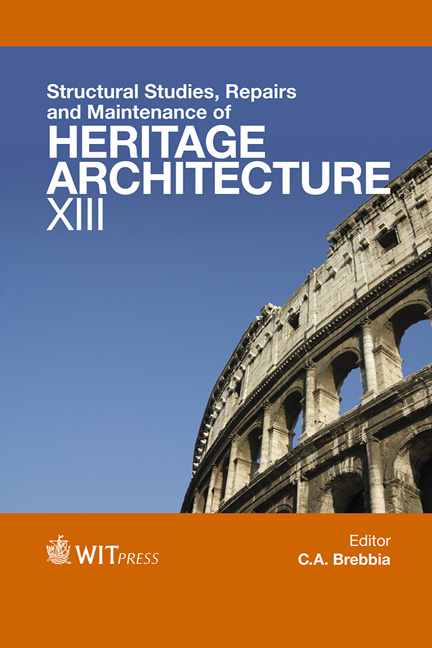Numerical Investigation Of The Influence Of Earthquake Forces And Foundation Settlement On The Performance Of Post-Byzantine Churches
Price
Free (open access)
Transaction
Volume
131
Pages
13
Page Range
317 - 329
Published
2013
Size
2,323 kb
Paper DOI
10.2495/STR130271
Copyright
WIT Press
Author(s)
G. C. Manos, L. Kotoulas & V. Matsou
Abstract
The earthquake performance of stone masonry Post-Byzantine churches subjected to seismic forces is examined. First, a three-nave Basilica is studied with a system of stone-masonry vaults and domes as a superstructure together with a wooden roof. Next, a cruciform type 18th century church is studied which also utilizes a system of cylindrical vaults and spherical domes that form the superstructure together with the wooden roof. In addition, a three-nave 18th century Basilica is examined where the wooden roof is supported directly on the peripheral masonry walls and the internal colonnades. All these churches developed structural damage to the masonry that is believed to arise from the amplitude of the gravitational and seismic actions combined with the deformability of the foundation, which is examined here. It is shown that the foundation deformability explains, partly, the appearance of structural damage. The numerically predicted regions that reach limit state conditions correlate well with actual damage patterns. Moreover, the vaults and domes of the superstructure appear to be vulnerable also. Keywords: Byzantine churches, stone masonry, dynamic response, earthquake performance, foundation settlement.
Keywords
Keywords: Byzantine churches, stone masonry, dynamic response, earthquake performance, foundation settlement.




